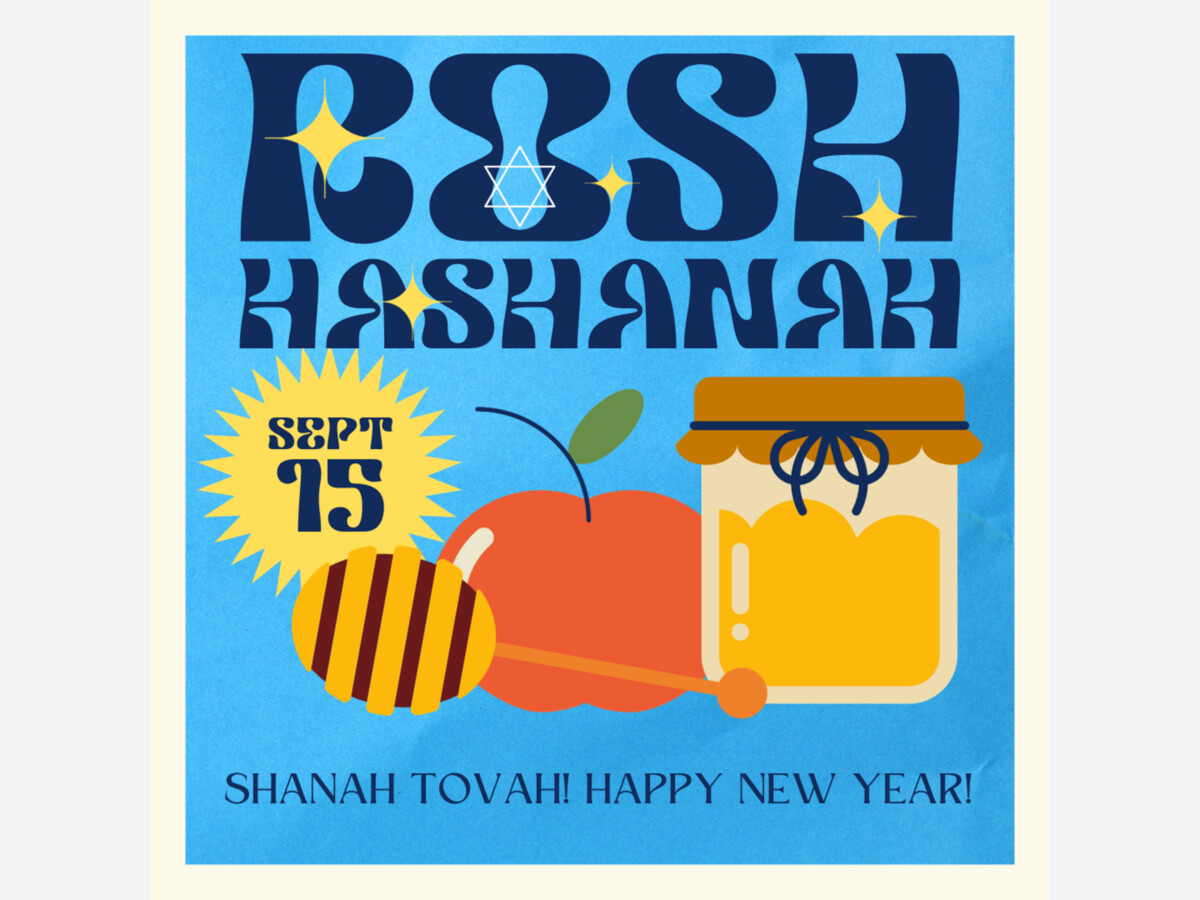Image

Best wishes,
Westwood Minute
-----
Observant Jews celebrate Rosh Hashanah beginning at sundown on Friday, September 15th, and many will be enjoying traditional holiday foods that include those on the list below. But you don't have to be Jewish to share in enjoyment of the special foods of this time of year. Click on the links below to find recipes to explore.
Because Ashkenazi Jews (of the Eastern European diaspora) make up most of the Jewish population in the U.S., many familiar Jewish favorites hail from Russia, Poland, Germany, and the rest of Central and Eastern Europe. Less ubiquitous but just as delicious is Sephardi cuisine, which encompasses foods of the Spanish diaspora in North Africa, the Middle East, and the Mediterranean.
A staple at the Passover table and your local diner alike, matzo ball soup is easy to make using matzo ball mix and a few pantry ingredients, but is greatly improved by making a comforting, from-scratch chicken soup or your favorite hearty vegetable stock. Originally made from the leftover crumbs of matzo, Central and Eastern European Jews made "knoedel." In the 1930s, Manischewitz began selling matzo ball mix in the U.S., reportedly under the name "Alsatian feathery balls."
There are few things more enjoyable than a warm, freshly baked challah. Usually intricately braided with a shiny browned outside, challah is a soft and fluffy egg-based bread, mildly sweet from honey or sugar, that is typically served on Shabbat or with other holiday meals. Try this challah smeared with butter and drizzled with honey, made into french toast, or used as a sponge for brisket.
Chraime is a Sephardic dish of fish stewed in a spicy tomato sauce made by Jews in North Africa and the Middle East for Passover, Shabbat, and other holidays. The name "chraime" comes from the Arabic word for "hot," though spice levels can be adjusted according to personal taste and availability of chilis. This recipe blends paprika and cayenne with olive oil and tomatoes, and is stewed for an hour at low heat, making it a relatively easy centerpiece dish without a lot of prep or active cook time.
A singularly comforting Passover and Rosh Hashanah dish, brisket has been an important staple in festive Jewish meals for generations. In Eastern Europe, brisket was considered by non-Jews to be a less desirable cut of meat, due to its toughness if not cooked over a long period of time. However, the kosher cut's lengthy preparation time was not a deterrent for Jews, who could begin cooking the brisket 24 to 48 hours prior to Shabbat or other holidays. This version of brisket is braised in red wine, herbs, and beef stock for a deep, full-bodied flavor.
Noodle kugel, otherwise known as lokshen kugel, is a light, sweet, and dairy-filled egg noodle casserole often served on Shabbat or other holidays. Jewish food historian and recipe developer Joan Nathan writes in "The Jewish Holiday Kitchen" that lokshen kugel originated in Eastern Europe, where it was considered the "official Sabbath dessert." It was often baked at the same time as the cholent, or Shabbat stew, which would result in a moister kugel. This noodle kugel recipe combines sugar with four types of dairy to form a basic foundational kugel; however, it can be dressed up with the addition of raisins, spices, pineapple, or any other dried fruit or nuts.
This iconic purple soup gets its vivid color from beets, and can be enjoyed either hot or chilled. Though borscht is a staple dish across Russia and Poland, it is thought to have originated in Ukraine. Borscht is not always served as a holiday dish, but often accompanies Shabbat meals, and on Shavuot, borscht is frequently garnished with a dollop of sour cream, since dairy is symbolic of the purity of the Torah. This easy, Russian-style borscht is vegetarian and very hearty, with beets, potatoes, and red cabbage.
Keftes de prasa, or fried leek patties, are a Sephardic Hanukkah tradition among Jews in Turkey, Greece, Southern Europe, and the Middle East. Leeks have historically played a large part in Sephardic dishes, and spread from their native eastern Mediterranean across Eurasia with the Sephardic diaspora. Much like Ashkenazi latkes, keftes de prasa are Hanukkah favorites because they're fried in oil. Some recipes call for potato, while others, like this one, simply require leeks as the base.
Honey cake is a dense, sweet, and spiced cake typically baked on Rosh Hashanah, or the Jewish new year. Honey is an essential component of any Rosh Hashanah celebration, as it represents hope for sweetness in the coming year. The preparation of honey cake is not complicated, but the ingredients in this recipe, such as cloves, nutmeg, orange juice, coffee, and (optional) whiskey, impart a deeply complex palate which offsets the sweetness of the honey. The cake is best enjoyed with a cup of tea or coffee and poached autumnal fruit, like apples or pears.
This article on holiday foods by Stacker has been edited for brevity and a focus on Rosh Hashanah. It is republished pursuant to a CC BY-NC-4.0 license. Read the original article here.